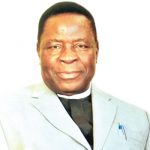A mother recently shared her heartbreaking experience after her son turned four. She referred to it as her darkest moments as a mother when the doctor based on an MRI declared that her newborn son had suffered a stroke. According to the result of the MRI, one-sixth of his neurons had been destroyed and his body reacted by having seizures. Dumbfounded, she had screamed, can a baby have stroke?
Based on reports by neurologists, pediatric stroke occurs in the first month of life in roughly one in every 4,000 births (whether premature or full-term) and is one of the top 10 killers of children. Experts say that it happens when a blood vessel that carries oxygen and nutrients to the brain either bursts or is blocked by a clot. About 80 percent of strokes in babies are caused by a clot. At that point, part of the brain cannot get the blood and oxygen it needs, so it starts to die, neurologists say.
Who’s most likely to be affected?
Stroke is a risk factor for babies with congenital heart disease, blood disorders such as sickle cell disease, and infections including meningitis and encephalitis, experts say. Premature babies, whose blood vessels are more fragile, can suffer bleeding in the brain known as hemorrhagic strokes. Stroke can also occur when mothers have a history of infertility, or preeclampsia, or antiphospholipid syndrome, an immune-system disorder that can cause recurrent miscarriage. But in 10-20 percent of cases, the cause of stroke is unknown.
What are the signs?
Infants might have seizures or twitches in only one arm or one leg, show a weakness on one side of the body, or have delays with their speech as well as with crawling and walking. Young children might limit their arm or leg movements or show a preference for one hand, and they might also have language delays.
What are the long-term effects?
In addition to weakness or paralysis on one side of the body, a stroke can cause a child to have trouble with swallowing or speech; he might also find it hard to control his emotions, remember things, or problem-solve. The long-term complications of a stroke might include cerebral palsy, epilepsy, and psychiatric disorders such as ADHD.
When people hear the word stroke generally, the first picture that pops into their minds is likely to be of an elderly individual. While it is true that older adults are at greater stroke risk; the chance of having a stroke doubles with each decade of life after the age of 55. But infants and children can also suffer stroke. It can even occur before birth.
In 2011, a study published in the Annals of Neurology reported a 51 per cent6 increase in ischemic stroke incidence among boys aged 5-14 from the period 1995-96 to 2007-08, while girls aged 5-14 saw a 3 per cent rise in ischemic stroke in the same period.
In many ways, stroke in children – commonly referred to as pediatric stroke – can present more challenges than stroke in adults.
The early signs of stroke in children are much more subtle than in adults, meaning they often go unrecognized. According to the International Alliance for Pediatric Stroke (IAPS), newborns who suffer stroke may not even begin to show any symptoms until the age of 4-8 months.
What is more, because parents, caregivers and even health care professionals do not often associate stroke with children, it may be ruled out as a possibility. As a result, many children fail to receive adequate treatment.
A 2014 study conducted by Dr. Mark Mackay, director of the Children’s Stroke Program at the Royal Children’s Hospital and Murdoch Children’s Research Institute in Melbourne, Australia, and colleagues found that only half of interviewed parents whose children suffered stroke thought their child’s symptoms were serious enough to seek medical help, while 21 per cent of parents adopted a “wait-and-see” approach. What is more, only 36 per cent considered stroke as a possible cause of their child’s symptoms.
As with most health conditions, early treatment for stroke is key. Unfortunately, around 20-40 per cent of children die after a stroke, and of those who do survive, around 50-80 per cent will have lifelong neurological problems, such a partial or total paralysis.
Other underlying conditions that may raise a child’s stroke risk include head and neck infections, abnormal blood clotting, head trauma and systemic conditions, such as autoimmune disorders.
Maternal history of infertility, premature rupture of membranes during pregnancy, maternal preeclampsia and chorioamnionitis – inflammation of the fetal membranes due to a bacterial infection – may also increase a child’s stroke risk.
Though cardiovascular-related risk factors for stroke in adults are rare in children, recent studies have indicated an increase in these risk factors among the younger population. This is down to a rise in high blood pressure, obesity, diabetes, high cholesterol and tobacco and alcohol use among youth.
A 2014 study published in the journal Neurology also suggested colds and other minor infections in childhood may temporarily raise a child’s stroke risk.
“We’ve seen this increase in stroke risk from infection in adults, but until now, an association has not been studied in children,” commented study author Dr. Heather Fullerton, director of the University of California-San Francisco Pediatric Stroke and Cerebrovascular Disease Center.
“It is possible that inflammatory conditions contribute more to the stroke risk in children, however, further research is needed to explore this possible association.”
It is important to note, however, that in around half of all childhood stroke cases, no previous risk factor can be determined.
What you should look out for?
As mentioned previously, it can be very hard to spot stroke symptoms among very young children. Around 40 per cent of infants do not show symptoms of early stroke; a parent may not know their baby has suffered stroke until months later when they show reduced movement or weakness on one side of their face.
As well as weakness or numbness on one side of the body, other signs of stroke in children may include severe headache, dizziness and vomiting.
Repetitive twitching of the face, arm or leg can be an indicator of stroke in newborns, as can a pause in breathing alongside prolonged staring and extreme fatigue.
As children develop, the signs of symptoms of stroke are very similar to those in adults. Weakness or numbness on one side of the body and problems speaking or understanding language – such as slurred speech or problems understanding simple instructions – may be signs of stroke. Other signs of stroke among children may include severe headache, vomiting, fatigue, severe dizziness and appearance of seizures.
Additional information from babystroke.com
WATCH TOP VIDEOS FROM NIGERIAN TRIBUNE TV
- Relationship Hangout: Public vs Private Proposals – Which Truly Wins in Love?
- “No” Is a Complete Sentence: Why You Should Stop Feeling Guilty
- Relationship Hangout: Friendship Talk 2025 – How to Be a Good Friend & Big Questions on Friendship
- Police Overpower Armed Robbers in Ibadan After Fierce Struggle





